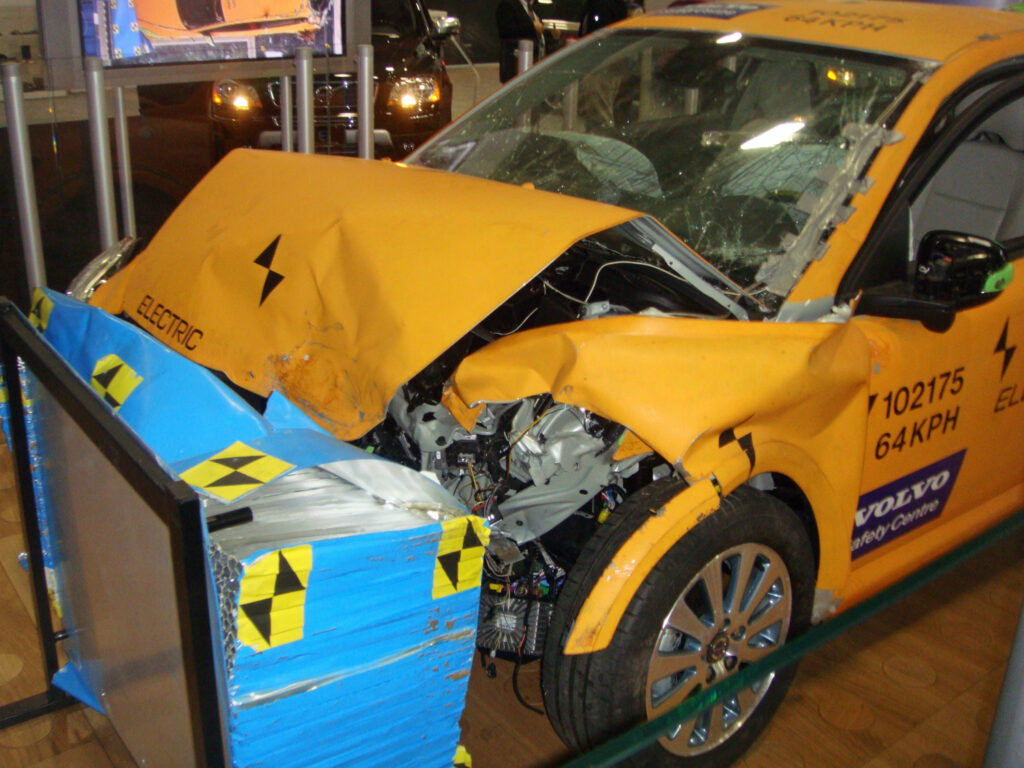Electric cars are involved in 50% more traffic accidents than their petrol and diesel counterparts, according to a study by insurer Axa.
The high number of accidents has actually nothing to do with the technology, but everything to do with the driving behaviour of the drivers. It is mainly the fast and sharp acceleration that surprises drivers, especially those new to the cars, and leads to accidents.
We see more and more battery-powered electric cars on our motorways. Of newly registered vehicles, more than 17,000 were purely electric in the first half of this year. That is no less than 8.8 percent of new cars. With hybrids included, more than 30 percent of newly registered cars in 2022 will now be fully or partially powered by electric motors.
At the same time as the growing number of electric vehicles on the road, concerns about their safety are also increasing. Their batteries are of specific concern: if they catch fire, they are extremely difficult to extinguish. However, insurer Axa surveyed more than 1,200 owners of electric cars and looked at its accident statistics. Their findings show that the striking accident figures actually have nothing to do with the fire risk.
Axa's data shows that flammable batteries are not the big problem with electric vehicles. Electric cars do not catch fire more than cars with combustion engines on petrol or diesel.
Electric motor response faster
The main cause of traffic accidents with electric vehicles is the inappropriate driving behaviour of the drivers. Michael Pfäffli, head of accidents and prevention at Axa, explains: "We have seen in our statistics that drivers of electric vehicles cause 50 percent more collisions than cars with internal combustion engines. Drivers of powerful electric cars in particular cause twice as many accidents as with standard cars."
Crash tests organised by Axa show how fast electric cars accelerate. The response of electric motors is incomparably faster than that of the classic combustion engines using petrol or diesel, especially with the more powerful models. An electric vehicle simply shoots out of the starting blocks much faster and more powerfully.
Driving style differs from engine to electric
Drivers who switch from a classic car to an electric model often have too little awareness of how an electric car reacts. Before they realise it, they speed away and bang into something. Axa's figures also show that most accidents happen when accelerating, not when braking. In addition, the larger electric cars are extremely fast. Owners often don’t dare to press the accelerator pedal. All this together leads to 50 percent more accidents than with regular cars.
Adjusting the driving style is therefore advised: take into account the much more agile acceleration of the cars, handle the accelerator with more care and keep your distance.
The misjudgement of those unexpected accelerations is therefore the main cause of accidents with electric cars, say the experts at Axa. But when they collide with similar models with fuel engines, electric cars usually come out the least damaged. Electric cars are generally a lot heavier than classic cars because they carry a lot of batteries. And it is the lightest car that suffers the most damage in a collision.
Battery fires are dangerous
It is important to be careful if an electric car is hit from behind in a traffic accident or if, for example, it drives too abruptly over a speed bump or over a bumpy surface, where the bottom of the car rubs on the road. The batteries are located at the bottom of the car. If the bottom plate of an electric vehicle is badly hit and the protection around the batteries is also damaged, they can catch fire. And this is a serious problem.
The current lithium-ion batteries are extremely hard to extinguish. And an electric car has thousands of batteries. For the fire brigade, the only solution is often to immerse the car in a container filled with water for a number of days. There are cases where electric cars were taken out of the water tank after a few days and yet caught fire again. This is a problem that remains a challenge for the manufacturers and the emergency services.
What to do incase of an accident?
Fire services are constantly looking for new ways to extinguish the burning cars more efficiently, but fireman Michael Derungs, who specialises in the new technology, admits that a water container remains the best solution so far: "The vehicle must be placed in a container with water. It is best to keep a battery pack submerged until it has cooled down completely. But this can take some time.”
Related News
- Google Maps to launch fuel-saving routes in Belgium
- Little enthusiasm for government's sustainable 'mobility budget' for employees
- Mobility company Poppy to launch electric scooters in Brussels
What the manufacturers have already found a solution for is a possible electrocution by a damaged electric car. Often people are afraid to take occupants out of an electric car after an accident because they fear that the car could be completely electrified.
However, experts say that, in the event of an accident, the batteries of an electric car are automatically disconnected from the rest of the vehicle: the power is cut off, as it were, and the car is perfectly accessible. If possible, you can help the occupants out of the crashed vehicle without the fear of electrocution.
"You better stay away from the car only if you see the orange electricity cables exposed," explains Geert Warrens, a director with Axa Belgium. “These are the cables through which the highest voltages run, and they are dangerous.” Waiting for specialised emergency services is then the message.
The bottom line is that electric cars are not inherently more unsafe than their gasoline or diesel counterparts. Much depends on the driving behaviour of the driver: if they know how to adapt their driving behaviour to the potency of the electric motors, accidents can be prevented.

